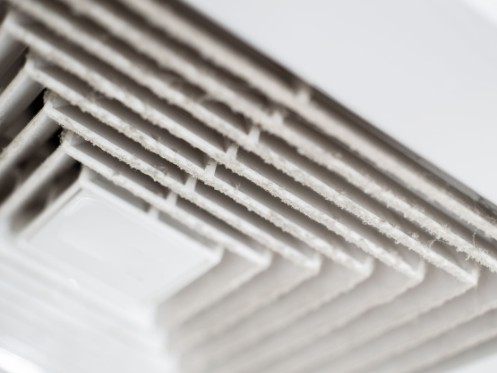- 24 Hour Emergency Service
- 509-734-0669
- Serving Locations in Washington, Oregon and Colorado
10 Different Ways to Improve Indoor Air Quality

Indications That Your Home’s Ductwork Is Damaged
April 11, 2023
Discover the Top 5 Best Smart Thermostats for Your Home
June 14, 2023Breathing in fresh air is crucial for maintaining good health. A deep breath of clean, fresh air is invigorating, and it can boost your mood and energy levels while lowering your heart rate and easing stress. On the other hand, poor indoor air quality is associated with a range of health problems that include allergies and respiratory problems. Many of us spend a significant amount of time indoors, which means that we need to ensure the air we’re breathing is free from pollutants, allergens, and other potential health hazards. Here are 10 ways to help you boost the air quality in your home or business.
1. Turn on the Air Conditioning System
The filter in your air conditioner can help remove allergens and pollutants from the air, making it easier to breathe. However, using your air conditioner correctly is crucial if you want this method to be effective. When using an air conditioning system, keep your windows and doors closed as much as possible so that outside pollutants don’t enter your home.
2. Keep a Healthy Level of Humidity
High humidity levels can lead to mold growth, which can harm your health. Low humidity levels, on the other hand, can dry out your skin and trigger respiratory problems. To ensure a healthy humidity level in your home, you can use a humidifier or dehumidifier, depending on the current conditions.
3. Don’t Smoke Indoors
Indoor smoking harms both smokers and non-smokers alike. Cigarette smoke contains harmful chemicals that can linger in the air, leading to poor indoor air quality and respiratory problems like asthma and allergies. Additionally, smoking indoors increases the risk of developing serious health problems like heart disease and lung cancer. Children are especially vulnerable to the dangers of secondhand smoke due to their smaller lungs and weaker immune systems, and pets can be affected, too.
4. Manage Radon Levels
Radon is a dangerous radioactive gas that can be found indoors. It’s impossible to detect without testing because it’s odorless, colorless, and tasteless. The risk of lung cancer increases with exposure to high radon levels over time. Therefore, the EPA recommends keeping indoor radon levels low. To do this, you can regularly test your air using a reliable detection kit or hire a professional tester. If elevated levels are detected, mitigation systems like an active sub-slab depressurization system or ventilation systems may need to be installed.
5. Keep Your Pets Clean
Pets are beloved but can lower indoor air quality by leaving dander and hair on carpets and furniture, leading to allergic reactions and respiratory problems. To prevent this, bathe your pets with pet-friendly shampoo regularly. This removes excess fur and dander from their skin. Daily brushing can also help reduce loose fur. Finally, wash your pet’s bedding regularly in hot water to remove allergens.
6. Use Natural Cleaning Products
To maintain good indoor air quality, use natural cleaning products made from plant-based ingredients instead of conventional cleaning products with harsh chemicals and synthetic fragrances that can harm the air quality. Natural cleaners are healthier and eco-friendly and just as effective in cleaning without releasing harmful toxins into the air. They are also safe for pets, children, and those with respiratory problems. Be sure to read labels carefully to avoid hidden toxic ingredients when selecting natural cleaning products.
7. Use Doormats With Synthetic Fibers
Doormats serve as a barrier to prevent dirt and debris from entering your home. Synthetic fiber doormats are better than traditional materials, like cotton or wool, as they harbor fewer allergens and bacteria. Synthetic fiber doormats are easier to clean and can be vacuumed or hosed down without fear of mold or mildew growth. Placing these mats at all entry points reduces the pollutants and dirt entering your home.
8. Open Windows
For optimum indoor air quality, it is advised to open windows on both sides of a room to create cross-ventilation. This is especially important when using household or cleaning chemicals that may emit hazardous fumes. Doing this will allow fresh air to enter and help reduce the concentration of potentially harmful fumes.
9. Maintain HVAC Systems
HVAC systems are responsible for heating, cooling, and circulating air throughout your house. Regular maintenance, including filter changes and duct cleaning, can improve indoor air quality by removing dust, allergens, and other pollutants.
10. Use Air Purifiers
Air purifiers reduce airborne pollutants such as dust, pollen, and pet dander. When shopping for a purifier, look for a model equipped with a HEPA filter capable of trapping particles as small as 0.3 microns.
At Bruce Heating & Air, we offer various services to help improve indoor air quality in Kennewick, WA, and the surrounding areas. Our HVAC maintenance services can keep your system running efficiently while our air purifiers and air cleaners can remove pollutants from the air. We also offer other services such as heating installation and maintenance, heat pump services, AC installation and maintenance, and heating repair services. Contact us today to learn more about our services.


